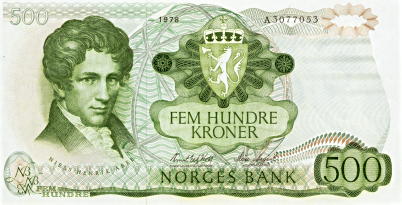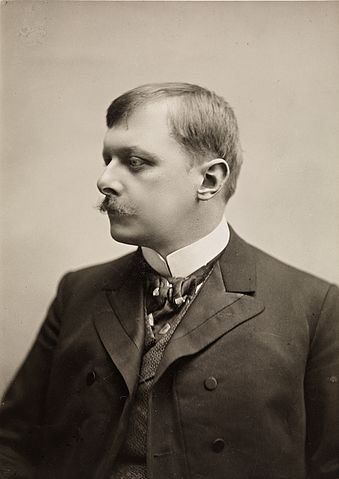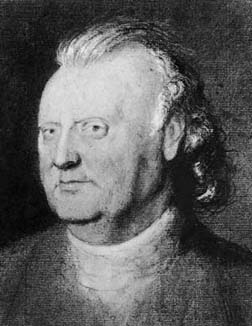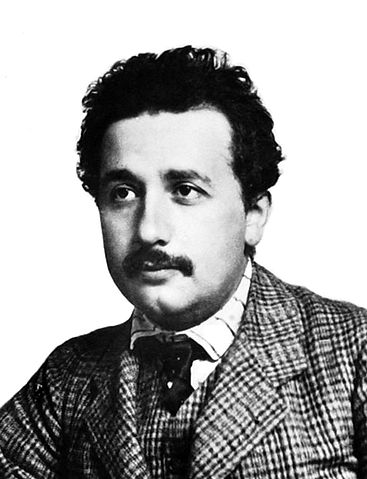
Om Forum for
matematiske perler (og kuriositeter)
2001/2002 ·
2002/2003 ·
2003/2004 ·
2004/2005 ·
2005/2006 ·
2006/2007 ·
2007/2008 ·
2008/2009 ·
2009/2010 ·
2010/2011 ·
2011/2012 ·
2012/2013 ·
2013/2014 ·
2014/2015 ·
2015/2016 ·
2016/2017 ·
2017/2018 ·
2018/2019 ·
2019/2020 ·
2020/2021 ·
2021/2022 ·
2022→.
— neste foredrag blir annonsert her i tidens fylde —

The winter 1822/23 – in complete isolation, mathematically speaking, in Christiania (today's Oslo) – the 20 year old Abel made his first major mathematical discovery. (Incidentally, this discovery of his would two years later inspire and lead him to his greatest discovery in mathematics, his famous Addition Theorem.) Abel was studying integrals (later called abelian integrals) of the form $\int y\,dx$, where $y=y(x)$ is an algebraic function. (The function $y=y(x)$ is an algebraic function if $y$ is given (implicitly) as \[y^n+p_{n-1}(x)y^{n-1}+\cdots+p_1(x)y+p_0(x)=0,\] where each $p_i(x)$ is a rational function of $x$.) His object was to decide whether the integral $\int y\,{dx}$ is an elementary function or not. For example, \[ \int \frac{x+1}{(x-2)\sqrt{1+x^3}}\,dx = 3\log\frac{(1+x)^2-3\sqrt{1+x^3}}{(1+x)^2+3\sqrt{1+x^3}}\] is an elementary function, while (as Abel and, independently, Liouville, proved) \[\int \frac{dx}{\sqrt{(1-x^2)(1-k^2x^2)}}, \qquad 0\lt k\lt 1,\] is not an elementary function. In connection with all this Abel proved a theorem which turned out to be of fundamental importance in the study of abelian integrals. The proof of this theorem, which in the old literature was referred to as “Abel's Theorem” (not to be confused with Abel's Addition Theorem), is a true gem. Typical for Abel, he is using only elementary methods (like the Euclidean algorithm), but applying them in ingenious ways. Furthermore, his proof introduced completely new ideas into mathematics. We will comment on all of this in the talk.
An intriguing aside: In the Preface to the second edition (published in 1916) of his monograph “The integration of functions of a single variable”, G. H. Hardy writes: “In the first edition I reproduced a proof of Abel's which Mr. J. E. Littlewood afterwards discovered to be invalid. The correction of his error has led me to rewrite a few sections.”
What Hardy is talking about is the theorem of Abel's referred to above. We will not only repudiate Littlewood's assertion, but also point out where Littlewood completely misses the point in Abel's ingenious argument.

Carl Størmer (1874–1957) var professor i matematikk i 43 år, fra 1903 til 1946, og satte dermed en rekord. Han var professor lenger enn noen annen i norsk universitetshistorie. Han publiserte sin første matematikk-artikkel som 18-åring, og syv til før han avsluttet studiene i Oslo seks år senere, sterkt inspirert av Elling Holst. Deretter studerte han i Paris hos Poincaré og Jordan, og i Göttingen hos Felix Klein, før han vendte tilbake til Norge og ble professor noen dager før sin 29. fødselsdag.
Størmer publiserte tyve matematiske arbeider før han ble 30, men så skjedde det plutselig en forandring. Hans «Lady friend Aurora Borealis» kom inn i hans liv. Han fortsatte å utdanne og inspirere gode unge matematikere, men han viet sitt liv til Aurora.
I dette foredraget vil vi se litt på Størmers matematiske perler. Men vi vil konsentrere oss om hans liv med Aurora, og også si litt om ham selv og hans kjære Ada.

In 1770, Joseph Louis Lagrange proved his famous four-square theorem: Every positive integer can be written as the sum of four squares. In the same year, Edward Waring stated a generalization involving arbitrary powers: For every $k$, there exists a number $g(k)$ such that every positive integer can be written as the sum of at most $g(k)$ $k$th powers of positive integers. For example, every positive integer is the sum of at most nine cubes, so $g(3) = 9$. Waring did not provide a proof of his statement, which subsequently became known as Waring's Problem. It was proved by David Hilbert in 1909. This will be a leisurely and elementary talk on the history of this fascinating result.

As no other people in history the Maya searched for a unified comprehension of time, space and gods. They developed what we may call an astronomical-religious system whose aim was to understand the basic order of the universe. The purpose for humans was to harmonize with this reality. Now, in this talk, we shall mostly leave aside the beliefs and religious ideas of the Mayas. But it is difficult, and in fact rather tactless to ignore them completely.
We are going to concentrate on the Maya astronomy. They made countless observations and calculations and obtained results which only today may be improved. Our leading question is: How did they do it?
We know a great deal about what they actually achieved. They calculated the length of the year, the synodic periods of the moon and the planet Venus, and had tables of eclipses in a distant future. But surprisingly little is known about how they made their observations, how they calculated, and not least, which mathematical skills they possessed. This is what we are going to pursue, and perhaps find some answers.

Albert Einstein i 1904 eller 1905
I present the special and general theories of relativity in a historical context with emphasis on the pioneers of the development of these theories. I also give a brief summary of the main principles of the theories, and mention a few consequences of them for our understanding of time, space and gravitation. Universe models, black holes and gravitational waves will also be mentioned.